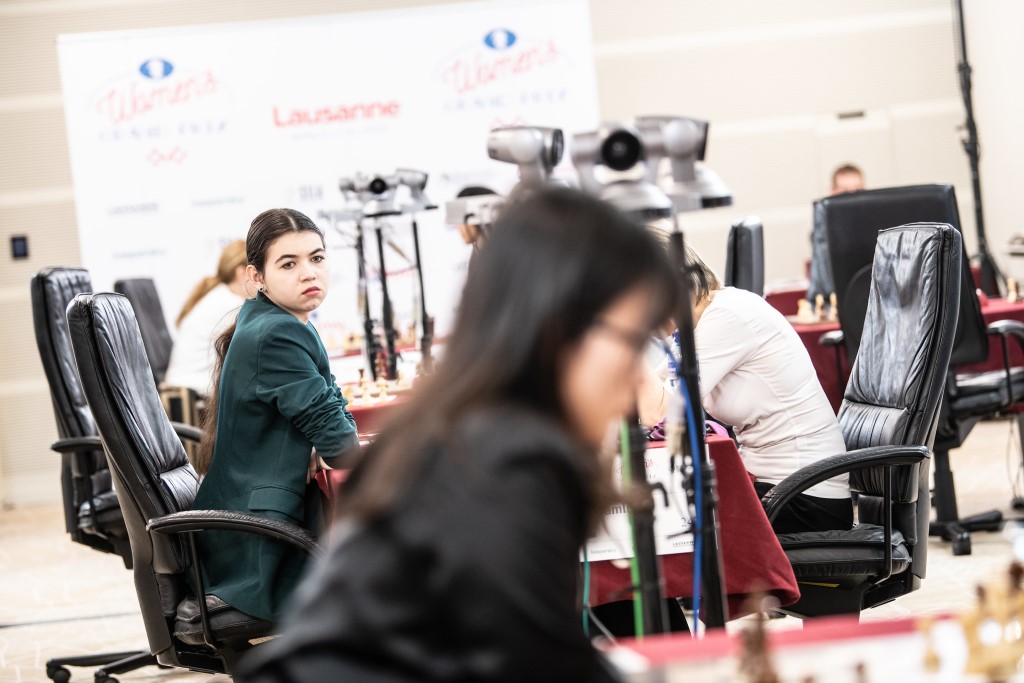A fighting round
After missing a number of winning chances, Aleksandra Goryachkina insisted on trying to defeat Pia Cramling until move 128, but to no avail. Had the Russian defeated the veteran from Sweden she would have taken the sole lead, but as it was she is now sharing first place not with Alina Kashlinskaya but with Nana Dzagnidze, as the former lost and the latter won in an eventful eighth round in Lausanne.
Behind Goryachkina and Dzagnidze, who stand on 5 out of 8, four players still have big chances to fight for first place — Zhansaya Abdumalik, Kashlinskaya and both Muzychuk sisters have collected 4½ points so far. With half the field battling it out for the top spot most, if not all, remaining games are relevant for the standings. Anything can happen on the three days of competition that are left at the capital city of the canton of Vaud in Romandy, Switzerland.

Jacky Delapierre, Executive Director of Athletissima, made the first move in Zhansaya Abdumalik v Anna Muzychuk | Photo: David Llada
The only game that finished relatively quickly in round eight was Zhansaya Abdumalik v Anna Muzychuk. Out of a Sicilian, Black gave up two queenside pawns to get an attack, but a logical triple repetition put an end to the struggle.
Meanwhile, the two games that ended decisively in less than 40 moves were decided after one of the players blundered in a sharp position. In both cases, the beneficiary of the mistake showed alertness and proficiency in conversion to get the full point.
Facing Ju Wenjun, Alina Kashlinskaya played the line Dmitry Andreikin used to beat Magnus Carlsen at last year's World Blitz Championship, in which White plays an early 9.f4, giving Black a chance to look for the initiative by giving up the bishop pair — of course, if White survives, she will have better chances in the endgame. Kashlinskaya had things under control until move 21, when she failed to foresee a killer tactical blow by her opponent:
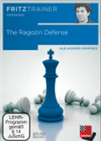 The Ragozin is being played by every top grandmaster in the world - it is time you also add it to your repertoire to get interesting and dynamic positions against 1. d4!
The Ragozin is being played by every top grandmaster in the world - it is time you also add it to your repertoire to get interesting and dynamic positions against 1. d4!
GM Alejandro Ramirez analyses every single move that White can play once the Ragozin is reached, but due to several transpositional possibilities he always emphasises strategic goals to keep in mind.
White's 21.♕e2 allowed 21...♝f3, and Black gained an exchange while keeping the initiative — capturing on f3 is not possible due to the mate on h2. Ju Wenjun went on to swiftly convert her advantage until resignation came on move 36.
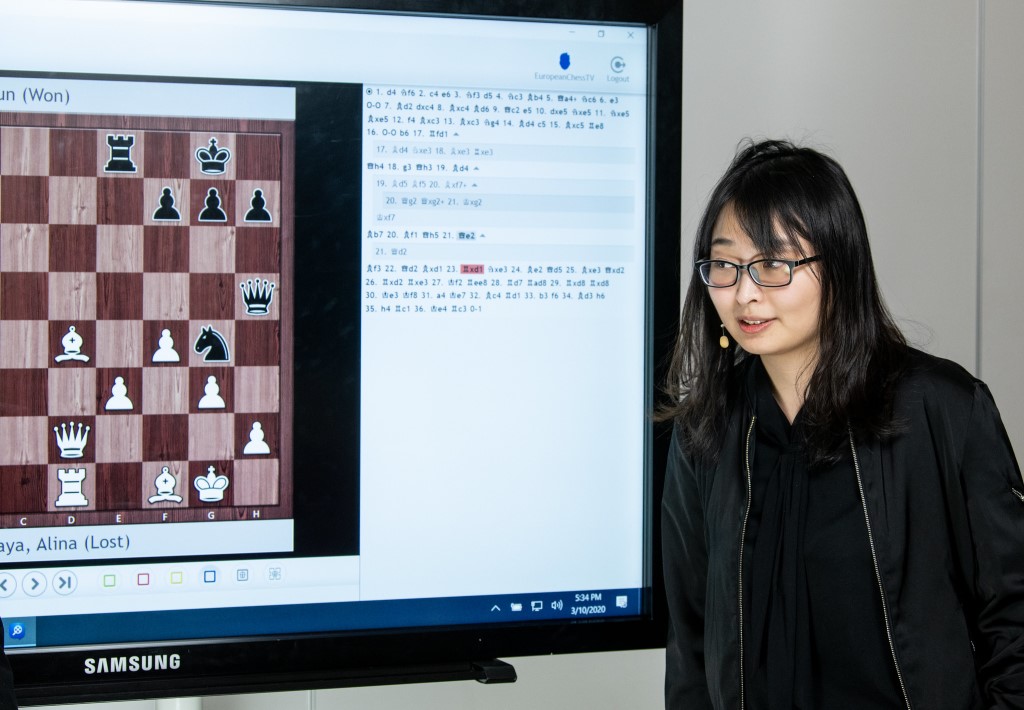
Ju Wenjun was very relieved after winning her first game in Lausanne | Photo: David Llada
Nana Dzagnidze, in the meantime, allowed her opponent to expand on the kingside and gain central control, but a single mistake by Marie Sebag was enough for the Georgian grandmaster to take over and get a large advantage:
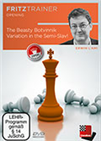 On this DVD you will be taken on a journey through what is arguably the sharpest opening line known to men.
On this DVD you will be taken on a journey through what is arguably the sharpest opening line known to men.
Sebag faltered by continuing with 24...fxg3, permitting 25.♗xe6+, and after 25...♚h8 26.fxg3 ♛h6 White has the very strong 27.♕a3, vastly increasing her edge. Sebag made seven more moves before resigning.
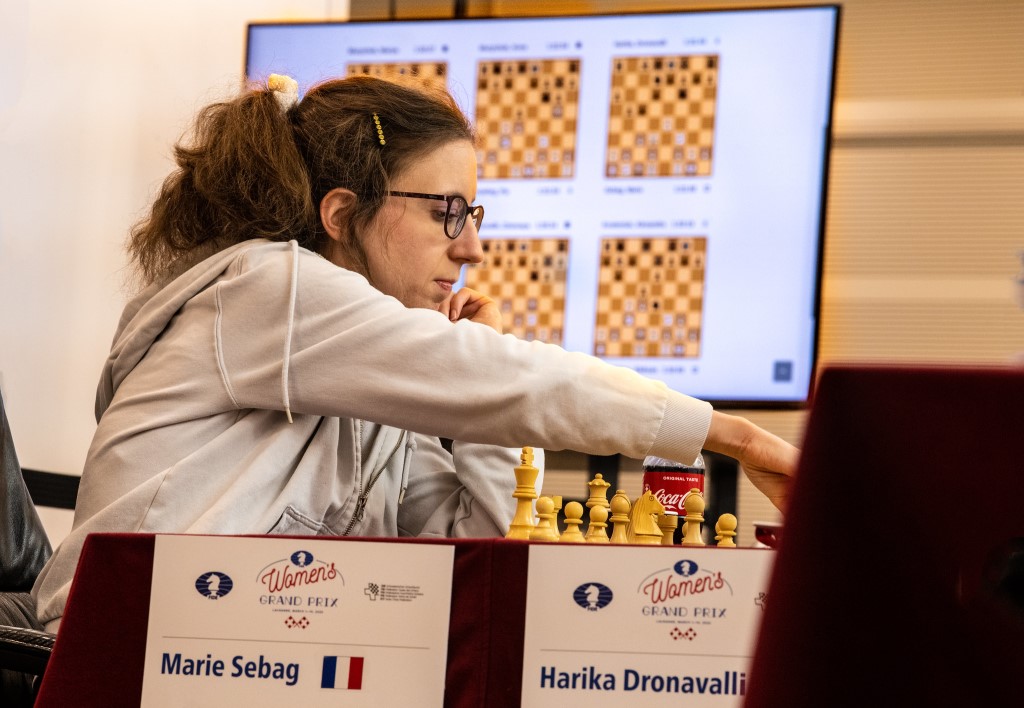
France's number one Marie Sebag during round two | Photo: David Llada
The other two decisive games were not decided by a single error in a sharp position. To the contrary, Antoaneta Stefanova and Mariya Muzychuk needed a lot of perseverance to convert slightly superior endgames against Harika Dronavalli and Alexandra Kosteniuk respectively. Muzychuk showed the value of activity in double rook endgames:
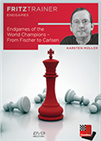 Let endgame expert Dr Karsten Müller show and explain the finesses of the world champions. Although they had different styles each and every one of them played the endgame exceptionally well, so take the opportunity to enjoy and learn from some of the best endgames in the history of chess.
Let endgame expert Dr Karsten Müller show and explain the finesses of the world champions. Although they had different styles each and every one of them played the endgame exceptionally well, so take the opportunity to enjoy and learn from some of the best endgames in the history of chess.
Black has a rook on the second rank preventing the white king from being activated and is ready to target the opponent's weaknesses on b4, c6 and g3. Nonetheless, some precision is needed to actually turn this into a victory. Muzychuk's technique did not disappoint, and she got the full point after 60 moves.
Stefanova, on the other hand, converted from a symmetrical position with three minor pieces per side:
White's knight and dark-squared bishop are more active than their counterparts, but finding a way to break through is no easy task. Stefanova went forward with 37.e4 in the diagrammed position, but only managed to convince her opponent to resign on move 95. The Bulgarian recovered from a couple of losses in rounds four and six, and will try to continue climbing up the standings table with White against Anna Muzychuk in round nine.
Select an entry from the list to switch between games
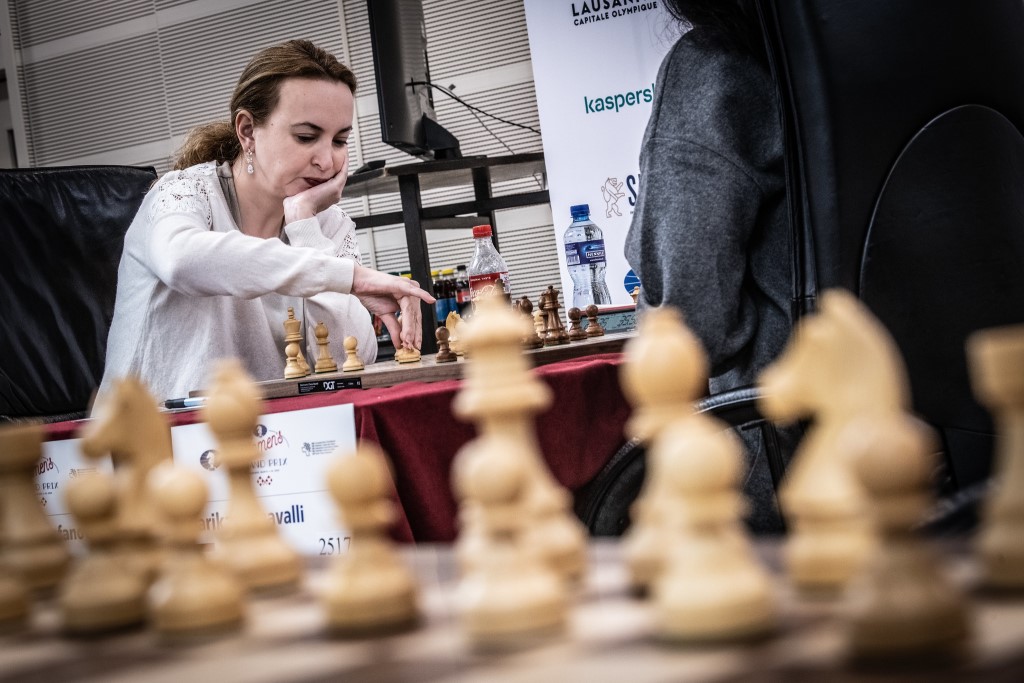
Former world champion Antoaneta Stefanova | Photo: David Llada
Standings after Round 8
 Let endgame expert Dr Karsten Müller show and explain the finesses of the world champions. Although they had different styles each and every one of them played the endgame exceptionally well, so take the opportunity to enjoy and learn from some of the best endgames in the history of chess.
Let endgame expert Dr Karsten Müller show and explain the finesses of the world champions. Although they had different styles each and every one of them played the endgame exceptionally well, so take the opportunity to enjoy and learn from some of the best endgames in the history of chess.
All games
Links
